Aditya Patwardhan talks about his journey as an international filmmaker. 23 Dec 2019
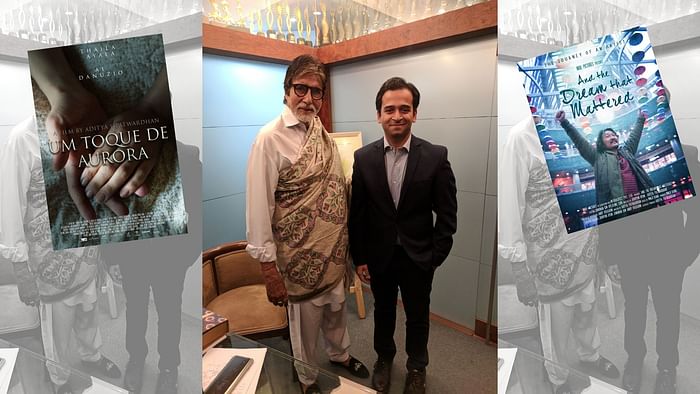
Filmmaker Aditya J Patwardhan, who hails from Jaipur, is today a recognisable name on the international cinema circuit. Here’s a chat with the multi-talented director, producer and scriptwriter on his journey in the world of cinema so far:
You are one of the rare Indian filmmakers to have been involved in international projects of several languages as producer and director, could you tell us about your journey in becoming a filmmaker – beginning from Jaipur to reaching an international platform.
Aditya: My filmmaking journey really began at the age of seven when I was introduced to music. After learning to play Tabla, Drums, and Piano during my early school years, one of the first things I was enticed with was observing how background score shapes a film. It became one of my primary obsessions to notice background scores and try to duplicate them at home on my instruments. Some of the films like Dil Se, The Lion King, Titanic, and Matrix played a key role in influencing me in terms of music and its association to videos. Naturally, I assumed that I would want to grow up to be a music director.
My love for music continued all the way to my Engineering College, Jaipur Engineering College and Research Centre (JECRC) where I played drums for a rock/metal band called Jettatura during 2007-20011. What started as a hobby during my engineering days with my band mates Kapil Acharya, Amit Jain, Aditya Luhadiya, and Somya Chaturvedi turned into a part-time job where we as a band performed at many planes in Northern India, in Planet M concerts, and in college music festivals. Apart from my band, I developed an interest in photography and public speaking during my engineering days, hosting multiple event in Jaipur. The cultural and creative exposure provided by my engineering college put me in close proximity with media & arts.
My first professional involvement with films came in the form of a short film called Kiski Kahani for which I worked as a music director. The film was screened at the Jaipur International Film Festival and it was the first time I saw my name appear on the silver screen. Kiski Kahani, a film based on a short story by Gulzar Saheb, was directed and produced, Hiren Pandya, a senior from my engineering college. It is of no surprise that even to this day I professionally collaborate with some of my associates from my college days. Hiren Pandya from Kiski Kahani is the lyricist for my upcoming feature film Rivers: The Upstream Story, and has been the lyricist of multiple music videos that I directed in the past. Amit Jain, the lead guitarist from my band, is the music composer for 5 of my short films ad my upcoming feature film Rivers: The Upstream Story.
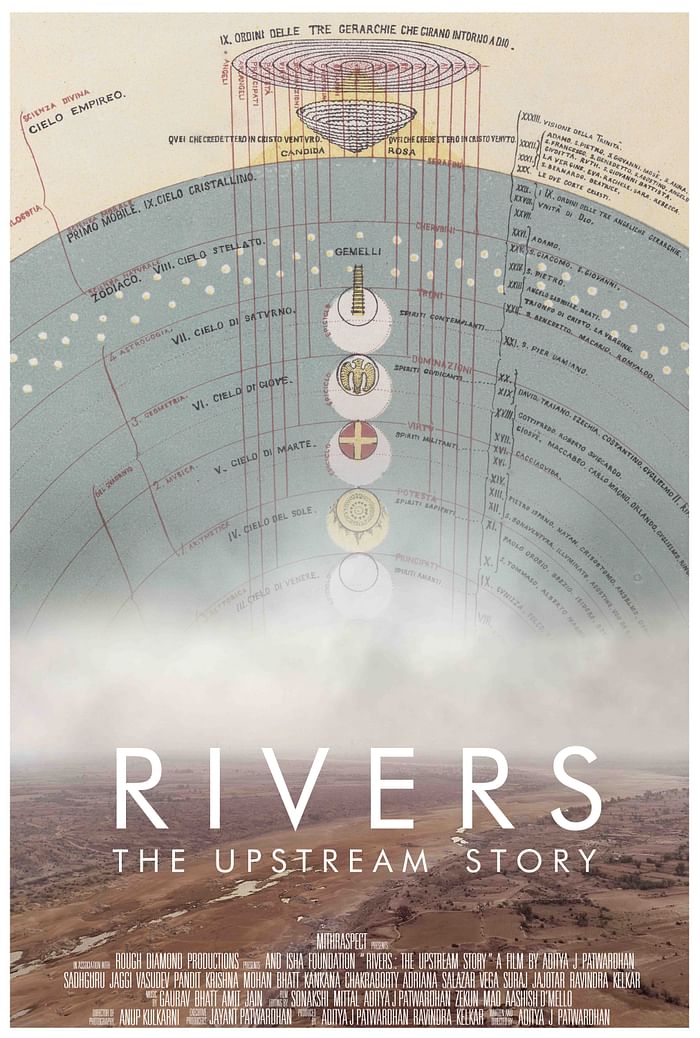
Having finished my engineering in Computers & Information Technology, I decided not to go fora software job and instead joined a local jewellery brand as the branding and communication manager. In addition to this full time job, I took up part time work at a political party as a member of the IT Cell and manager for the Social Media Department. Our team led the SocialMedia Campaign for the 2013 winning elections for Rajasthan state assembly. All this while, the dream to become a film director was always brewing in my mind. With time to spare on the weekends, I started working with Gaurav Bhatt, a Jaipur based musician from the Bhatt Gharana of Classical Musicians (known for Pandit Vishwa Mohan Bhatt, Pandit Krishna Mohan Bhatt) and together with Hiren Pandya’s lyrics, we started making music video that we launched on YouTube. Again, what started as a part time passion turned into a full-time work as our songs received media attention in Rajasthan and were subsequently released by Zee Music Company, Pepsi, MTV Indies, etc.
With the success as a director of music video, the social and cultural exposure due to working in a political setup, and advertisement experience of a jewellery and fashion brand, I decided to come to the United States to take a one year filmmaking Masters program at the New YorkFilm Academy’s Los Angeles campus. What was going to be a one year educational trip turned into a six year stay in Los Angeles as a film director and producer. Because of having all the filmmaking departments like Cinematography, Acting, Directing, etc under one roof, and an international student base, NYFA offered me an opportunity to work with students from all over the world. One of the most important thing that stands out to me about my initial days in Los Angeles is the opportunity I got to experiment with my films. I always made sure that any story I told was out of my comfort zone. The protective umbrella of a film school is where you can do just that:Try out as many genres and ideas as possible, because failure would have less consequence here than in a real world scenario.
Red House by the Crossroads was my first short film as a film director and producer. Set in1970s Poland, it was the story of a holocaust survivor family and it explored the far reaching impact that war and violence has on a society. My first Portuguese-English multi-lingual film called Red Souls, which dealt with the subject of human trafficking between Brazil and the US won the Best Film award at the Los Angeles Brazilian Film Festival, making me one of the first India directors to win an award at a Brazilian festival for directing a Portuguese film. My association to Portuguese language did not stop there. In the last year and a half, another short film that I directed called A Touch of Aurora (Um Toque Da Aurora) has won, been nominated and screened across the world with critical acclaim, included government sponsored screening in Brazil. A Touch of Aurora features Brazilian film star and actress Thaila Ayala and actor Al Danuzio. At present , I have three feature film up for release in 2020: And the Dream that Mattered, Transference and Rivers: The Upstream Story.
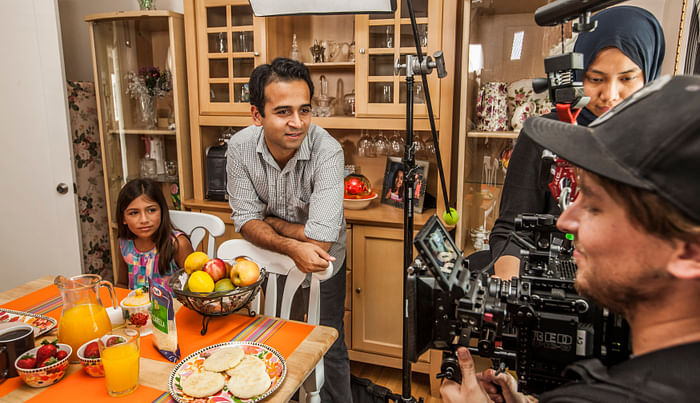
Which films and filmmakers were you influenced by as a youngster?
Aditya: Dil Se was the first film I remember getting obsessed by and thinking about at the age of 8. I used to watch it over and over again for its visual style, music, and dialogue, making observations based on what little I understood during that time. So I would definitely say Mani Ratnam was one of the first influences I had. Some of the other films that have deeply influenced my films and my thinking are The Lion King, this is probably the earliest film that I remember watching in Mumbai’s Sterling cinema. I was and still am a fan of the songs and music. Titanic, a visual masterpiece that still stands the test of time. The Matrix Trilogy, specially for the deep philosophy woven into a high octane sci-fi setup. Also, Raj Kapoor’s Shree 420, a film way ahead of its time, Amit Maitra’s Jaagte Raho from 1956 – again a film way ahead of its time, David Lean’s Doctor Zhivago a master piece and Francis Ford Copolla’s The Godfather Trilogy.
How do you manage to navigate between such diverse languages from Korean to Spanish to Lithuanian when you involve yourself as a creator especially when it comes to documentaries?
Aditya: First of all, I don’t have a background in any of those languages. I am a fluent speaker of Hindi, Marathi, and English. Being alien to those languages, naturally I didn’t go out seeking a foreign language project. But call it fortune or hard-work, but a Panamanian producer called Ricardo Diaz-Giullen approached me to direct a 20-minute TV pilot that he was writing and producing. Apprehensive at first, I took up the opportunity, with a lot of help, of course, from the writer, language assistants, and amazing actors. The pilot episode was very well received internally by networks it was pitched to, film festivals and news media in Panama. That gave me a confidence boost that I could direct more short projects in foreign languages. Being short, I was able to manage not knowing the language and that gave me the experience of handling longer films in languages I don’t speak.
When I first started directing foreign language films, it was a major challenge to make sure that the actors were conveying what I wanted from them. But that very challenge helped me in developing a knack for understating emotions and performances through facial expressions, voice pitch and modulation, and body language. That combined with a reliable language assistant on-set during filming made sure that I was able to translate the scene from page to screen. One of the factors that helped me in this was the fact that I was fluent in three Indian languages. Having grown up in Rajasthan, with primarily Hindi speaking social circles and a Marathi speaking family, I had started analysing early on in life how meaning translates between languages and how it shapes our body language and thought processes.

Could you tell us about Transference the thriller you are currently working on?
Aditya: Transference is an upcoming American psychological thriller/horror written and produced by Nicole Cannon. In light of the recent #MeToo movement, Nicole was incredibly moved by all of the women who have found the courage to stand up and have their voices be heard. Being a little girl with her own #metoo story(s) and having grown into a woman identifying with the incredible shame that comes along with sexual abuse, she discovered that in order to move out of victimhood and become whole, one must reclaim the innocence lost through childhood traumas.Transference is the story of one woman’s journey through the many stages of recovery out of victimhood and into wholeness.
Although it is not a completely personal story, the writer drew heavily from individual experiences and felt that this story belongs to anyone who is struggling to reclaim their essential self. As a director, Transference was a challenging project for me. Being a male director from India, and trying to understand the issue of sexual abuse in United States from the eyes of anAmerican female protagonist was an emotionally challenging and moving journey for me. Sexual abuse is a problem prevalent throughout the world, and a curse that every society has. More often than not, it happens where you least expect it, in the affluent sections of the so called “civilised” world. For me, the task was to find the thin balance between the differences and similarities between such horrific incidents and do justice to the films narrative. The difference was that the film’s setting was culturally American and my upbringing and perceptions primarily Indian, and at the same time, the similarity was that such horrific events happen across all societies and many times because of the same root evil.
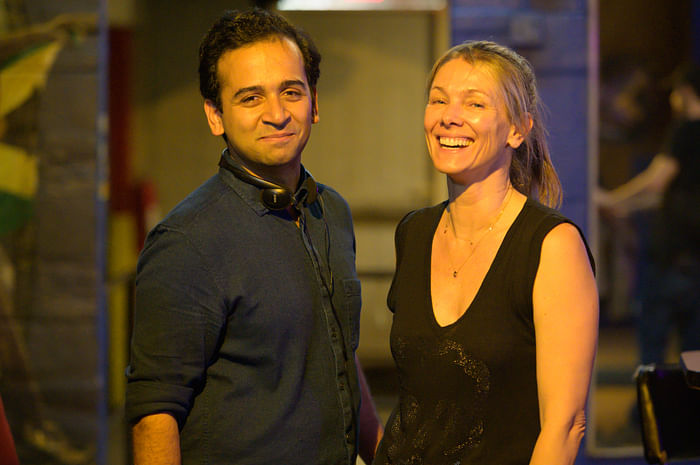
Your upcoming project What Makes a Sustainable Civilization is described as a documentary-fiction – that’s almost an oxymoron, could you tell us more about it?
Aditya: This is actually an untitled project with its internal production name as What makes a Sustainable Civilization. Simply put, it is a cinematic exploration of the different forms of civilizations; economic, religious, and military; that have existed over the past few millenniums, and an attempt to search for ingredients that can ensure that a society can ensure longevity of ideology, economic balance, and environmental sustainability. The project will look deeply at how an economy works, how society works, how a culture works, and how a nation works. We will try to define the boundaries of each of the above and explore what lies next, in light of the rapid and exponential scientific innovation that our species has achieved over the past couple of century.
A series with 5-6 episodes of one hour each, this project will have the format of a documentary-fiction film. Though the word sounds like an oxymoron, docu-fiction is something that I have had prior experience with. In my upcoming film Rivers: The Upstream Story, the characters and their backstories are fictional, but the situations they are in are real world events. For example, the characters of Adriana and Kankana are fictional in terms of their story arc, but the Venezuelan financial crisis, the River Water crisis in India, the Bhatt Gharana, etc are real events and persons. Pandit Krishna Mohan Bhatt plays himself in the film. Another character called Suraj, who plays the role of a street sweeper is actually a street sweeper from Jaipur. With this unique blend of fiction and non-fiction, I was able to make an engaging narrative with the fictional part, and yet retain its real-worldliness with the situations being true. With the experience that I gained from Rivers, my upcoming project too will have a similar format. Nine characters from across the world, living real-world contemporary situations while playing slightly fictionalized versions of themselves so that we can take creative liberties to engage the audiences.
Besides being a filmmaker you are an entrepreneur, tell us about your initiative to promote filmmaking in Rajasthan and giving it international exposure.
Aditya: Being from Jaipur, I always felt that – what if there were sources available in my hometown so that I wouldn’t have to move to a different place to pursue my dreams. Now of course, moving to LA made a huge difference to my career but I sill feel that if I had some of these resources in Jaipur, I would have had an opportunity to experiment more during my early days as a filmmaker. With that in mind, I have opened a film and media start-up company called Mithraspect PrivateLimited, headquartered in Jaipur, which looks after a lot of production and post-production work of my films. With all the feature films, music videos, and short films that Mithraspect has produced in Los Angeles, it has given work to artists in Jaipur wherever it could. For example, post-production, song arrangement, and VFX for Rivers: The Upstream Story is happening in Jaipur. Even during the filming, other than the core crew from LA, all the crew members who worked with us across India were from Jaipur or Rajasthan. My documentary, Eastern Shoes of the Western World, which was screened at various educational platforms in Indian and Europe, was produced, and edited in Jaipur, and was shot all over Eastern Europe and Baltic. Mithraspect has additionally produced multiple music videos in Jaipur involving local artists, which were given a platform by Zee Music, MTV Indies, Bluefrog, etc.I believe that as long as I am supervising the post-production, having it edited in Jaipur will in no way be detrimental to its creative quality.
Between feature films and documentaries – what do you like most to direct and why?
Aditya: My last feature film, and the upcoming project are both of a hybrid experimental genre, so this question is a bit difficult to answer. That being said, I think I like to direct features more than documentaries. In fact, even with documentary-fiction, it is honestly a documentary trying to be a fiction feature film. The reason for that is simple: that fiction features have a longer life in audiences’ mind. Any narrative that engages the audiences with a story has a longer life. Date Aligheiri’s Divine Comedy, being a story, would have a wider reach and popularity that Plato’s books on philosophy and theology. People might quote or refer the Bhagawad Geeta, but they will hold the stories of Mahabharat more dearer to their heart. So, ultimately, to tell a lasting idea or a concept, I think fiction features are the way to go.
In your experience of trying to make it abroad, have you ever experienced any discrimination of any sort, any negative experience that you’ve faced that has shaped you in any way?
Aditya: I would have to be honest and say that no, I have never had any kind of discriminatory experience. Cultural difference and any social friction that arises due to it, is a part and parcel of living in a multi-ethnic society. It is difference that make us unique and teaches us humility. Though there may have been minor un-important incidents here and there, it was actually the because of the accepting nature of the film industry in Los Angeles that I was able to assimilate with everyone, tell my stories and film in their completely uniqueness, and at the same time understand universal oneness.
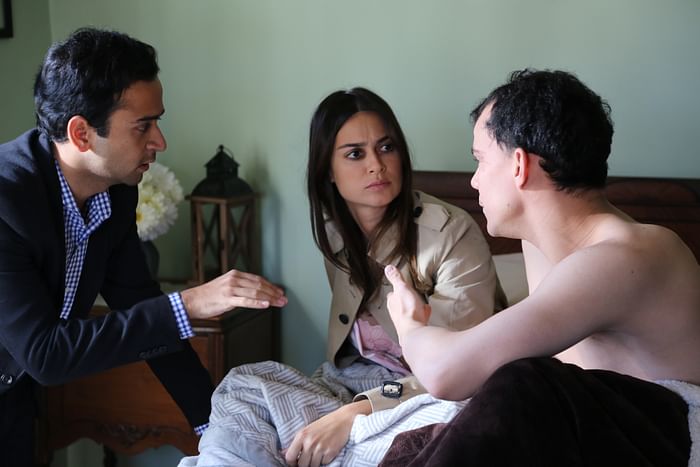
Of all the films that you’ve done, which one would you consider closest to you and why?
Aditya: Red House by the Crossroads, being a psychological drama set in 1970s Poland based on a family that survived that Holocaust, this project gave me the opportunity to explore the history of world war, the culture of Europe, the implications of war, the roots of communal hatred, and the skill to bring it to the screen. Additionally, this film was the first one that I made as a professional director and producer, giving me a platform from where I could make more projects, by achieving international acclaim and viewership.
A Touch of Aurora is a Portuguese-language Brazilian drama about a visually-impaired couple, Luis an ex-football star, and Sara, a school teacher. Luis an ex-goalkeeper who became blind in a car accident had a glamorous past and a successful career. Sara was born blind and leads her life independently. Being born a visually impaired person, she considers it to be a very unique ability. It is a deep and emotional story that explores acceptance, love, coming to terms with a tragedy that is unescapable. A Touch of Aurora features Brazilian film celebrity and star Thaila Ayala, who received critical acclaim for her role in this film. The critical acclaim received by A Touch of Aurora makes me joyous because it was the first full Portuguese language film that I directed, that too with a Brazilian celebrity, so naturally I was nervous about how it would do. Secondly, the film explores the subject of identity crisis through loss of vision for the protagonist. This it self was extremely challenging to me to comprehend at the beginning. Getting into the mindset of the characters, then getting the actors to a point where they could perform the roles, and ultimately getting the audiences to feel the same, and all of this in an alien language, was a peculiar journey and it taught me a lot.
Rivers: The Upstream Story, though this film hasn’t released yet, it gave me an opportunity to travel across India from south to north, across numerous cities and villages, work with NGOs, activists, Indian classical musicians, street sweepers, urban labourers, farmers, etc, humbling me in the process and teaching me a lot about my own homeland. Due to the sheer amount of things that I learnt during this process, this will be on one of the most precious projects that I have done.
What would be your 3 points of advice to any young aspiring filmmaker in India?
Aditya: I would say: 1. Pay attention to time and financial resources: Filmmaking is a costly and time-consuming field that requires a lot of patience. But with modern portable cameras, there is a way around it. If you are not sure about whether you want to do it or not, or what kind of stories you want to tell, there is always an option to take weekends off, so you don’t risk your day job and time, and experiment with short films, music videos, mini-documentaries, etc. This will help in the artist understanding themselves and their strengths, while keeping time and money expenditure at bay.
2. You can conform to standard filmmaking style, but never conform about film’s ideas: Knowing the filming craft according to a set standard is important, but bringing new ideas to the table if one of the best things a filmmaker can do. It should always be about what stories you want to tell and not about what stories work well. It is only in the initial days that one can experiment freely and they should use that time to the fullest.
3. A close team of artists, your creative companions: Your team is the most important thing in the world of filmmaking, sometimes more important that anything else. Much of the robust team that I formed during my days in film school days, is still working with me on bigger professional projects. One of the best examples is my long time associate cinematographer Anup Kulkarni. Anup, a cinematographer and VFX artist from Mumbai was my classmate in the film academy in Los Angeles. Working together in school films led to bigger and larger projects, and today I and Anup have worked together on more than 20 short films, 1documentary and 2 feature films. Even to this day, my regular music composer Amit Jain, who has composed 5 of my short films and 1 feature film, is my band mate from college days. Gaurav Bhatt, with whom I made music videos, is the one who composed songs for Rivers. Hiren Pandya, who directed the short film where I worked as a music director, is still the lyricist for all my films that have Hindi songs.
Liked this story? We’ll send you more. Subscribe to The Quint’s newsletter and get selected stories delivered to your inbox every day. Click to get started.
The Quint is available on Telegram & WhatsApp too, click to join.Published: 23 Dec 2019, 01:33 PM IST